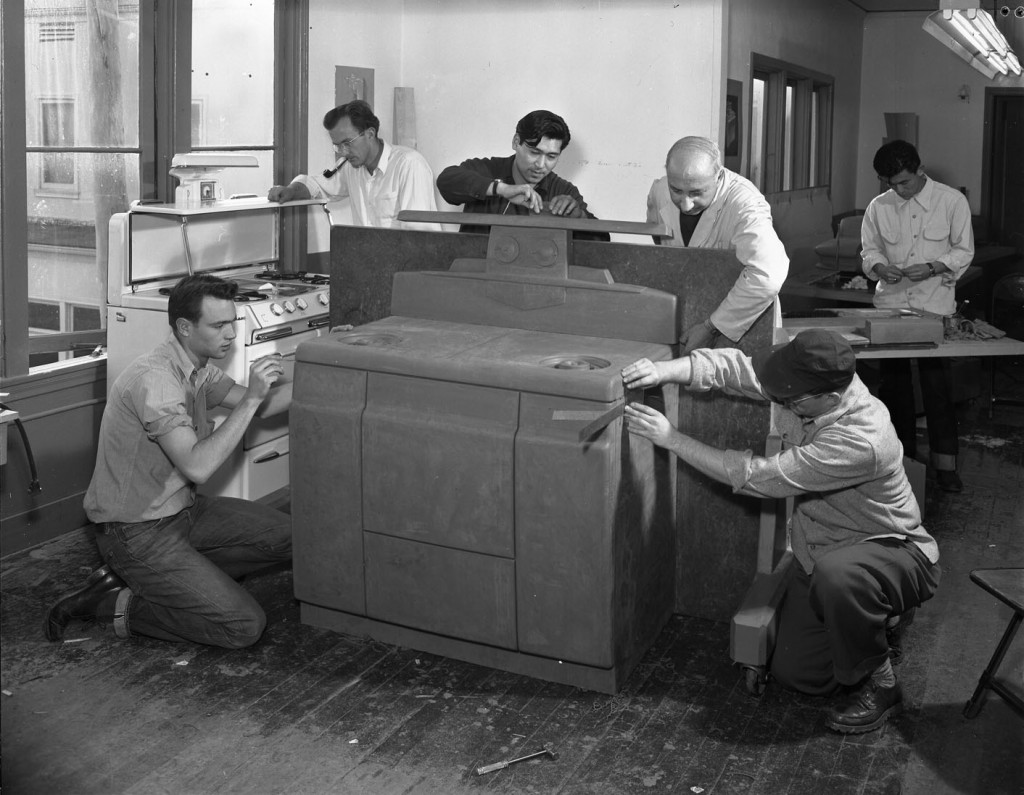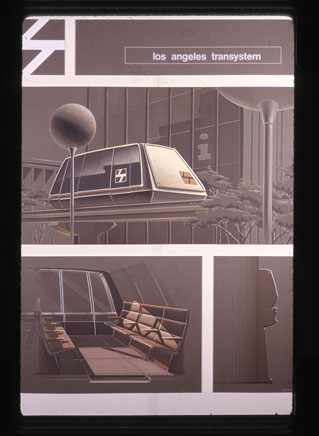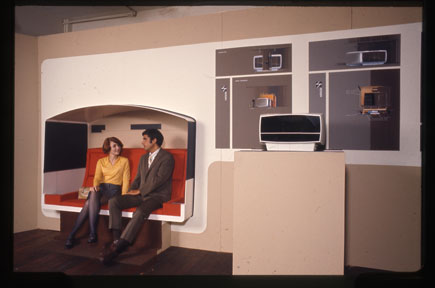Home » 2013
Yearly Archives: 2013
Archivematica and AtoM
A major component of this grant project is to test archival software that will help us preserve and make accessible our digital collections. While one goal of the project is to share Art Center history of industrial design education, another goal is to implement software to better manage our collections.
Artefactual Systems Inc. developed Archivematica and AtoM (Access to Memory), which are both open-source software solutions for managing digital preservation and access. In late October Art Center archives and information technology staff met with consultants from Artefactual Systems, Inc. to install both pieces of software, and we are now testing them with items from the Industrial Design collections.
For years archivists have preserved analog materials by having storage that is temperature and humidity-controlled, using archival enclosures and boxes, and consulting with conservators. For the last several years, a new paradigm for managing digital records was developed dealing with issues such as hardware and software obsolescence, preservation file formats, viruses, and authenticity. It is our goal to develop a strategy to deal with these issues and work at preserving Art Center’s digital materials.
Stove project, 1950
By 1950 the Industrial Design program was well established. The 1950 Art Center catalog states that students, “must be trained to combine imaginative design with technical proficiency. He must understand form, know color and materials, be able to render and draft, must be able to meet and collaborate with architects and engineers on a basis of common knowledge and understanding.” In this project, students are working on a full-scale model of a stove. The instructor in the photograph is model specialist Joseph Thompson who appears in many of the early Product and Transportation Design photographs and worked on the Model A Ford.
Los Angeles Transystem, 1970
Looking ahead twenty years to 1990, the “Los Angeles Transystem” Advanced Transportation Design project taught by Strother MacMinn, involved students looking at the community’s need for new public transportation systems as an opportunity in design evolution. The challenge also meant a broader scope of transportation design thinking and, a chance to demonstrate their employment capability in wider and more versatile fields.
They concentrated on the downtown area of Los Angeles as a focus point for a variety of public systems and the student group then contacted the City Planning Department for help. A final presentation of this project was made to local industrial designers, members of the City Planning Department and executives of Transportation Technology, Inc. This encouraged a steady flow of city planners and transportation designers to visit the project at Art Center. Following that, it was moved to the rotunda of the Los Angeles City Hall and then shown at the office of Home Savings and Loan.
The Art Center Archives has roughly 50 slides documenting the project.
General Motors Turbine Car project, 1960
Art Center has partnered with industry for sponsored class projects since 1960. General Electric, Ford, and General Motors were some of the first businesses to collaborate with Art Center. These class exercises provide students with real world experience related to design and feedback from professionals. A number of the industrial design projects documented in our collections are sponsored, and we will periodically post examples in this blog. Sponsored projects continue today and for information on our current program, under the Educational Partnerships office, click here.
The images below are from the 1960 General Motors Turbine Car project. These images show student Leo Pruneau airbrushing a full scale rendering, and later posing with his final presentation called “Bayonne.”
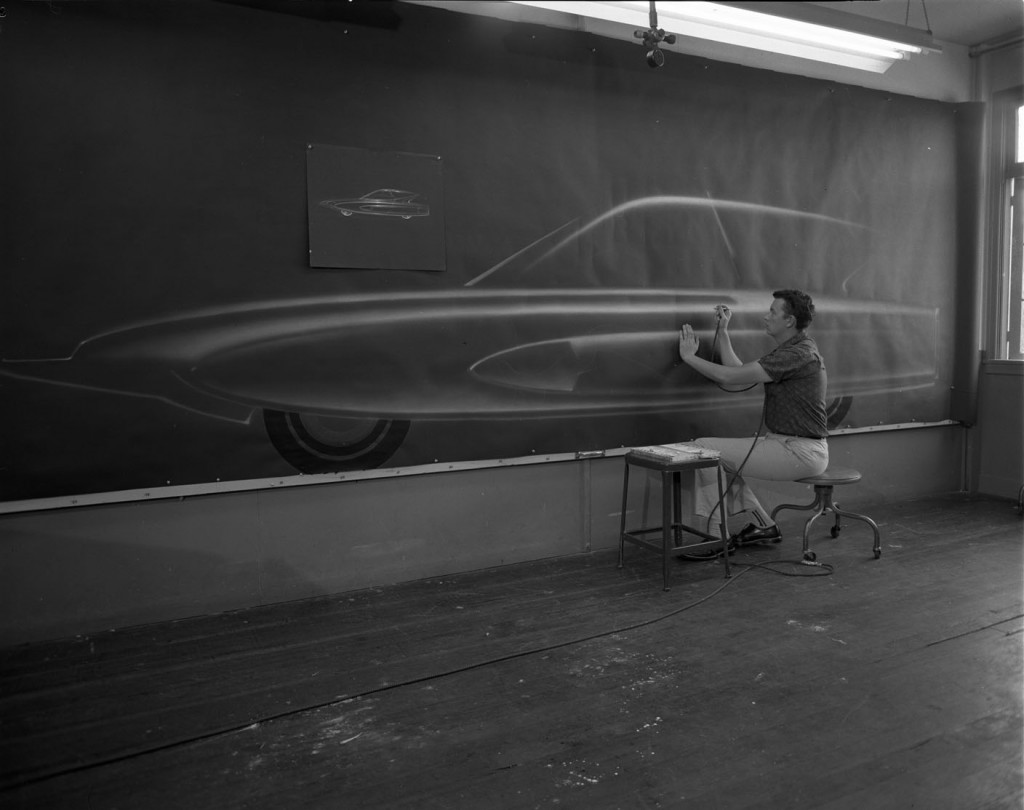
GM Turbine Project. Leo Pruneau (PROD 1961) is working on airbrushing a full scale rendering of a car. 1960 (2004.23.3225) Photography by Geoffrey Fulton.
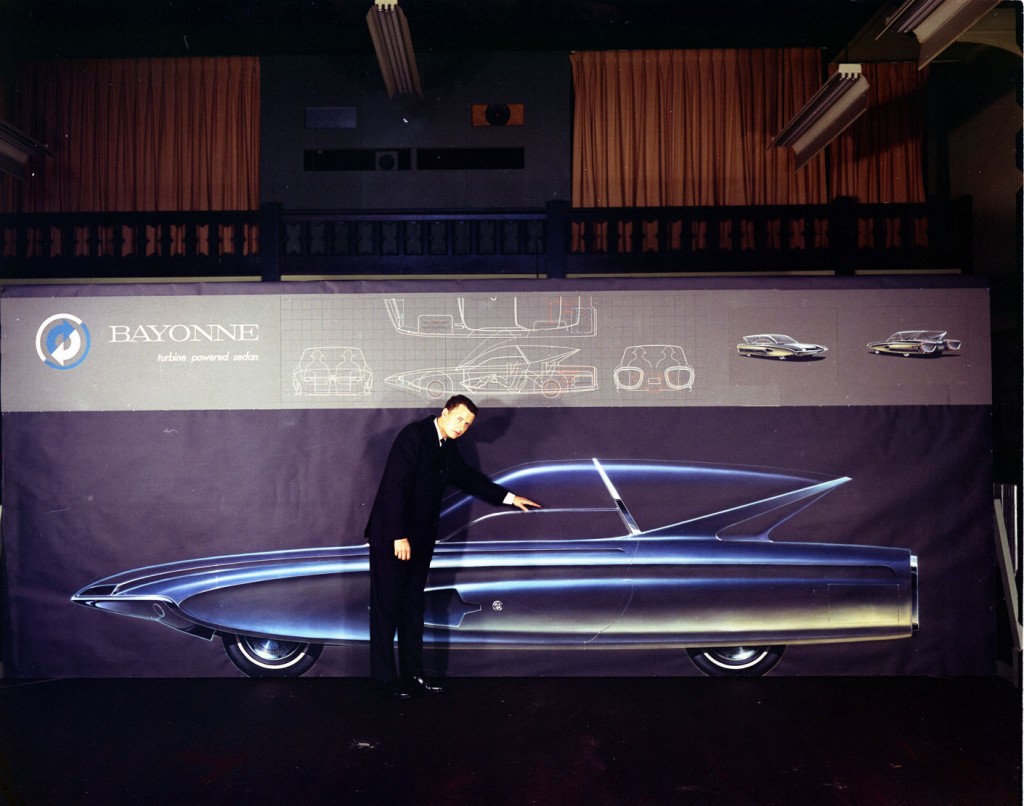
GM Turbine Project. Leo Pruneau (PROD 1961) and his final presentation named “Bayonne”. 1960 (2004.23.3259) Photography by Geoffrey Fulton.
Art Center in Japan, 1956
One significant collection we are processing relating to industrial design is the John Coleman collection, much of which consists of photographs detailing Art Center’s post-war 1956 trip to Japan. Coleman was an alumnus and industrial design faculty member from 1948-early 1970s, and had previously worked at General Motors. As guests of the Japanese Government, representatives from Art Center, including Coleman, alumnus Frank Nakamura, Industrial Design department director George Jergenson, and Art Center President Edward A. “Tink” Adams, traveled to Japan to meet with Japanese designers and report on the state of industrial design. A report was written, which we will be digitizing, entitled The Future of Japanese Industrial Design.”
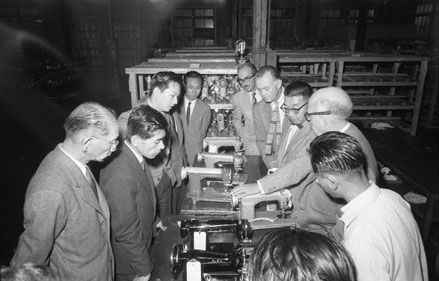
Art Center representatives touring the Juki Sewing Machine company factory floor in Tokyo, 1956, (2004.83.6.2). Photographer unknown. Gift of Carson Pritchard.
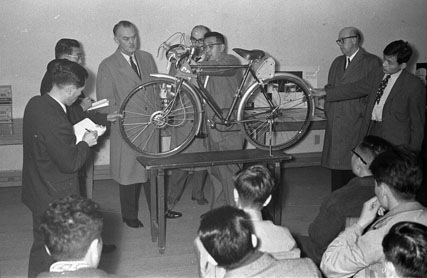
Art Center representatives examining a bicycle during a presentation in Nagoya, 1956, (2004.83.185.10). Photographer unknown. Gift of Carson Pritchard.
1937 Art Center catalog
The Industrial Design program at Art Center began in 1932 with Kem Weber as the first director. During the first phase of this project we will be looking closely at our collection of photographs, documents, publications, and moving images from the 80 year history and digitizing a selection of materials. This page from the 1937 Art Center catalog offers a glimpse into the pedagogy of the department in its formative years. 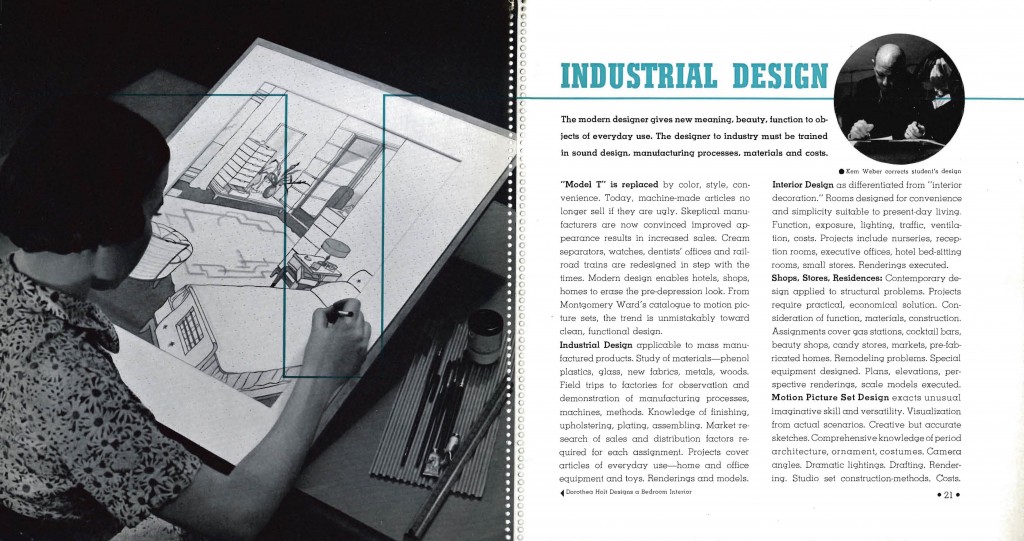
Welcome
The Art Center Archives is very excited to begin our pilot project to select, digitize, and post online portions of our industrial design collections through generous funding from the National Endowment for the Humanities.
Click here to read the announcement posting on Art Center’s Dotted Line blog.

